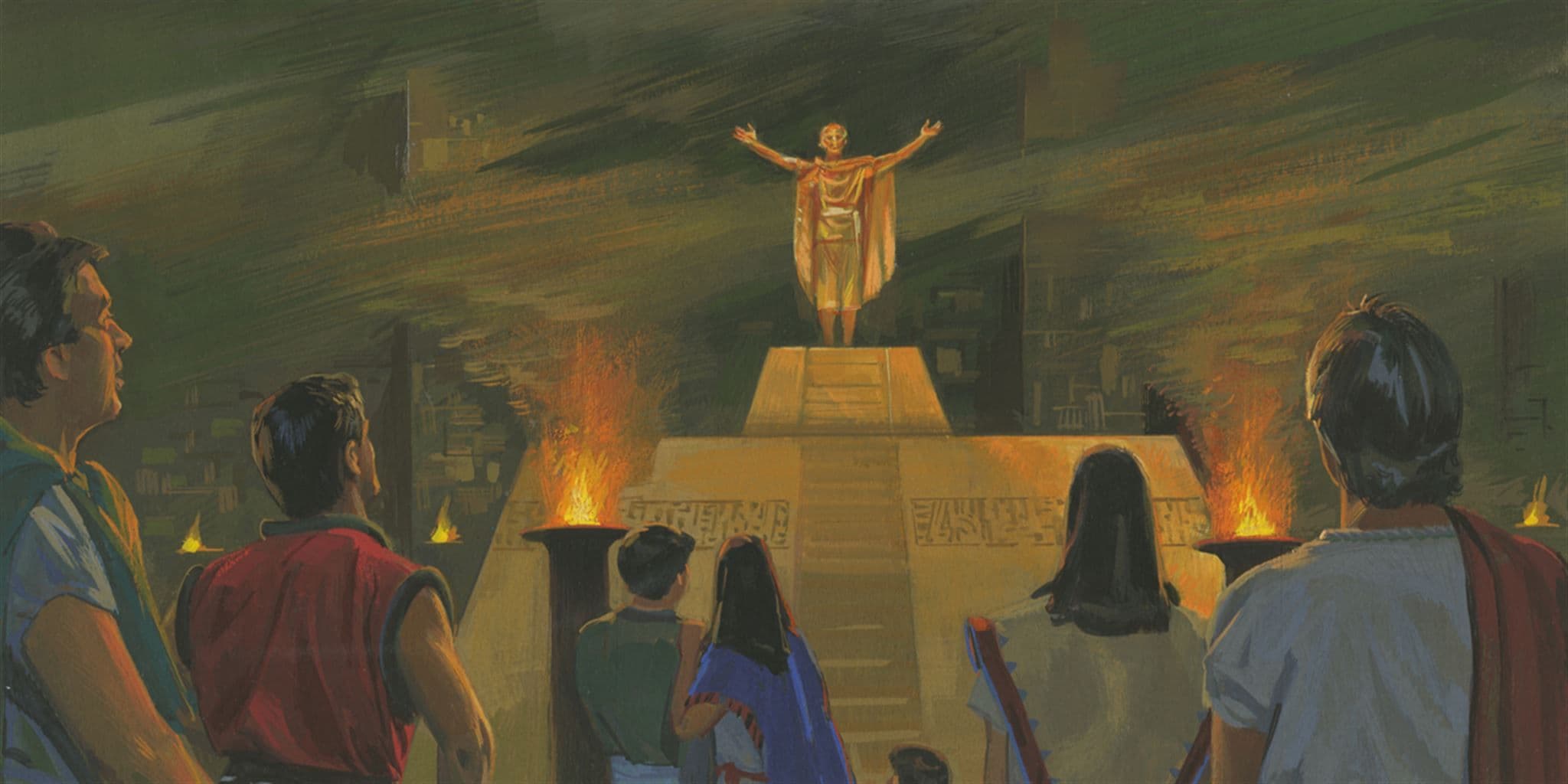Evidence #32 | September 19, 2020
Book of Mormon Evidence: Narrative Symbolism of Apparel
Post contributed by
Scripture Central

Abstract
The symbolism of apparel that is developed in several Book of Mormon stories helps demonstrate the text’s subtle narrative complexity.According to Parrish Brady and Shon Hopkin, “The Zoramite narrative of Alma 31–35 and Alma 43–44 … contains many subtle details regarding the importance of costly apparel and riches as an outward evidence of pride woven into a richly symbolic account.”1
This narrative symbolism begins when Alma and his missionary companions journeyed to Antionum (Alma 31:1–7), which may be etymologically related to the “antion”—a measure of gold in the Nephite system of exchange (see ).2 At this location, the missionaries found a group of Zoramites repeating rote prayers, one at a time, from a high stand called the Rameumptom. Linguist Matthew L. Bowen has suggested that the “ram” element in “Rameumptom” and “Zoramites” may both be associated with a Hebrew element that means “high” or “exalted.”3
When Alma prayed to the Lord, he drew attention to the “costly apparel” of these Zoramites, including “their ringlets, and their bracelets, and their ornaments of gold, and all their precious things which they are ornamented with” (v. 28). In the next chapter, readers learn that the poor among the Zoramites were “cast out of the synagogues because of the coarseness of their apparel” (Alma 32:2). When Alma and Amulek saw that these poor Zoramites were prepared to hear their message (see v. 6), they repeatedly “highlight[ed] the tension caused by outward appearances compared to a true state of being chosen.”4
Mormon, who seems to have picked up on this theme in Alma’s and Amulek’s teachings, then highlighted further references to clothing throughout the rest of the narrative about the Zoramites. For instance, after the poor class of Zoramites were expelled from Antionum, the people of Ammon took them in and “did clothe them” (Alma 35:9). At this point, the narrative tension is “reversed as the obedient and humble truly began to prosper in the land, while the proud and wicked began to lose their material blessings.”5
Later, during the war chapters in the book of Alma, Mormon reported that the wicked Zoramites had allied themselves with the Lamanites, who “were naked, save it were a skin which was girded about their loins” (Alma 43:20). Although the Zoramites themselves didn’t dress like the Lamanites, they were clearly linked with the army that had inferior battle attire. In contrast, the Nephites—and by inference, any of the poor Zoramites who joined their army—were prepared with “breastplates and with arm-shields, yea, and also shields to defend their heads, and also they were dressed with thick clothing” (v. 19).
When the Nephites defeated the Lamanites in battle, the leader of the Lamanite army denied that God had intervened and instead attributed their loss merely to the outward superiority of the Nephite armor (see Alma 44:9). This reasoning is noticeably similar to the Zoramites’ perception that outward clothing was somehow a key factor in determining worthiness and righteousness.
Yet the Book of Mormon demonstrates that even after the Lamanites tried to copy the Nephite’s mode of armor, they still failed to attain a military advantage (see Alma 49:6–12).6 As Brady and Hopkin concluded, “The ferocious battle between the Nephites and Lamanites in Alma 43–44 provides a stunning array of contrasting images, ironies, and tensions based on the metaphor of clothing, all of which are resolved by the end of the story line.”7
Conclusion
According to Parrish and Brady, their study helps “demonstrate the complexity of the Book of Mormon as a religious text.”8 The development of the theme of costly apparel in these chapters, supported by plausible instances of Hebrew-based wordplay, suggests that these narratives were authored by a skilled writer familiar with the Hebrew language.
Book of Mormon Central, “Why did Mormon Emphasize the Zoramites’ Costly Apparel? (Alma 31:28),” KnoWhy 283 (March 6, 2017).
Matthew L. Bowen, “‘See That Ye Are Not Lifted Up’: The Name Zoram and Its Paronomastic Pejoration,” Interpreter: A Journal of Mormon Scripture 19 (2016): 109–143.
Parrish Brady and Shon Hopkin, “The Zoramites and Costly Apparel: Symbolism and Irony,” Journal of the Book of Mormon and Other Restoration Scripture 22, no. 1 (2013): 40–53.
- 1. Parrish Brady and Shon Hopkin, “The Zoramites and Costly Apparel: Symbolism and Irony,” Journal of the Book of Mormon and Other Restoration Scripture 22, no. 1 (2013): 40.
- 2. See Sherrie Mills Johnson, “The Zoramite Separation: A Sociological Perspective,” Journal of Book of Mormon Studies 14, no. 1 (2005): 77: “The meaning of the name Antionum is not known, but given the focus that the Zoramite culture placed on wealth and materialism, it is interesting to note that when the Nephite system of exchange was standardized at the beginning of the reign of the judges, one of the gold measures was called an antion (equivalent to three shiblons of silver or to one and one-half measures of grain; see Alma 11:15, 19). While we do not know if there is a direct relationship between the words antion and Antionum, the prospect is intriguing.”
- 3. See Matthew L. Bowen, “‘See That Ye Are Not Lifted Up’: The Name Zoram and Its Paronomastic Pejoration,” Interpreter: A Journal of Latter-day Saint Faith and Scholarship 19 (2016): 109–143.
- 4. Parrish Brady and Shon Hopkin, “The Zoramites and Costly Apparel: Symbolism and Irony,” Journal of the Book of Mormon and Other Restoration Scripture 22, no. 1 (2013): 45–47.
- 5. Brady and Hopkin, “The Zormaites and Costly apparel,” 47.
- 6. The development of these points follows Brady and Hopkin, “The Zoramites and Costly apparel,” 47–50.
- 7. Brady and Hopkin, “The Zoramites and Costly apparel,” 47. This narrative ends when the Lamanite armies, led by Amalickiah and his brother Ammoron (both of whom were Zoramites; see Alma 54:23), are finally defeated (see Alma 62).
- 8. Brady and Hopkin, “The Zormaites and Costly apparel,” 47.